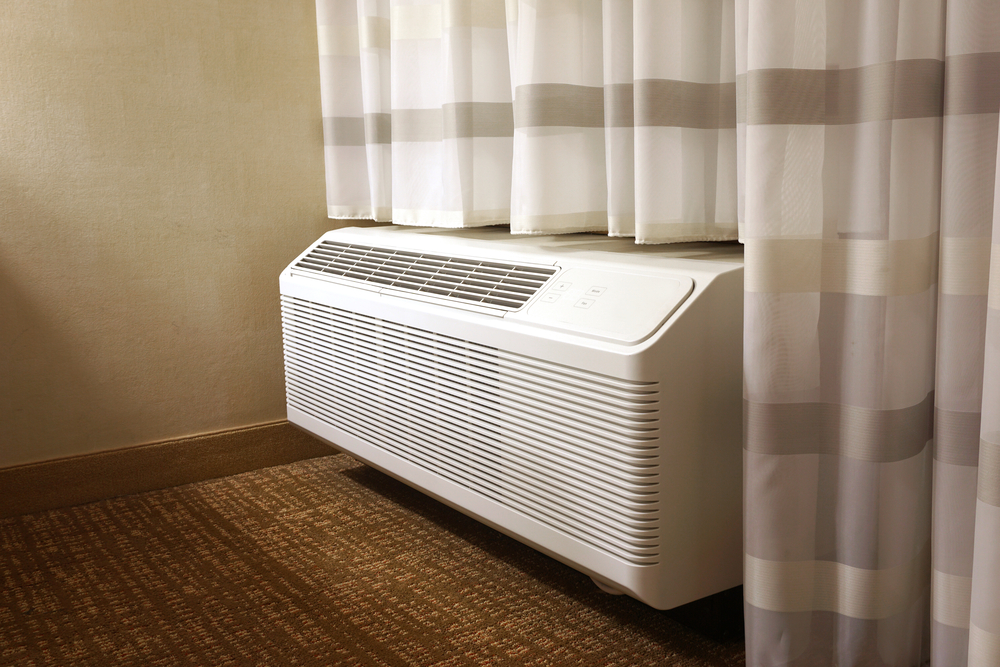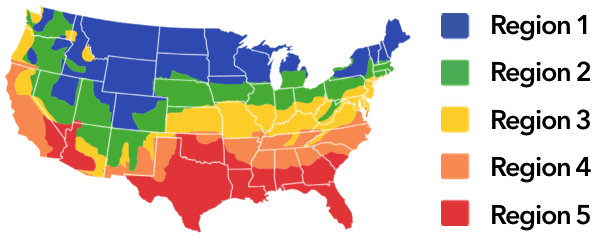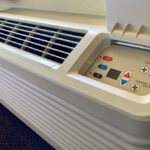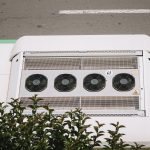If you’ve ever come into a hotel room, ready to escape the sweltering heat of summer, put your feet up, and finally relax, only to find that your room is freezing and perhaps a bit damp – you may have been the victim of an improperly sized a/c unit.
Unfortunately, many people think “bigger is better” when shopping for air conditioners, and end up purchasing a unit that is too powerful for their space, believing it will cool more easily. In a way, they’re right, more powerful units can cool a space more quickly – but it comes with some drawbacks.
Because air conditioners remove both heat and humidity, if your a/c unit is overpowered it will cool the room without adequately adjusting the humidity. You’ll also end up with a room that feels clammy, all while using more energy than a properly-sized unit would.
Luckily, with a bit of simple math, we can determine exactly what size air conditioning unit is needed for any room.
First, An Explanation of BTUs
The size of air conditioners is generally measured in British Thermal Units (BTUs). One BTU is defined as the amount of heat needed to raise one pound of water at maximum density one degree Fahrenheit.
Generally speaking, larger units with higher BTUs can cool or heat a larger space than smaller units, but you’ll want to take several factors into account when deciding which unit is right for your space, including the size of the space, what region it’s located in, and much more. Let’s get started!
Room Size
The primary consideration in sizing an air conditioner is the size of the room you need to heat or cool. Typically this is the starting point for determining how many BTUs you’ll need, as well as whether you need a unit that can both heat & cool, or a unit that is for cooling only.
You’ll need a minimum of 20 BTUs per square foot in most spaces. The following chart can be a handy reference:
| Room Size | BTUs Needed |
|---|---|
| 150 – 250 sq. feet | 6,000 BTUs |
| 250 – 300 sq. feet | 7,000 BTUs |
| 300 – 350 sq. feet | 8,000 BTUs |
| 350 – 400 sq. feet | 9,000 BTUs |
| 400 – 450 sq. feet | 10,000 BTUs |
| 450 – 550 sq. feet | 12,000 BTUs |
| 550 – 700 sq. feet | 14,000 BTUs |
Note: This chart assumes standard ceiling height. If the room you need to heat or cool happens to have high ceilings, you may want to go up to the next BTU tier to compensate.
Region
The next most significant factor determining how many BTUs you need in an air conditioner is the region your space is in. If you live in an area which is mostly quite hot, you probably only need a unit that can cool. On the other hand, if you live in an area with severe winters, you’ll definitely need a heat pump.
If you’re in Region 1 on the map below, you won’t need additional BTUs, but will need to ensure your unit has a heat pump to help keep your space warm during the frigid winters.
Similarly, if you’re in Region 5 on the map below, you likely experience especially hot conditions during the summer. It’s worth looking into a unit with higher BTUs to help meet your cooling needs during the sweltering summers.
Room Activities
Some room activities can generate a great deal of heat, which will require additional cooling power to offset.
For instance, if you have a home gym the act of working out will generate a great deal of body heat, and possibly heat from exercise machinery as well. If you’re in the market for a unit to cool a space like this, it’s worth jumping up a tier in BTUs.
In most homes, the most dramatic heat difference is the kitchen. With ovens, stovetops, and more generating heat, you need some extra cooling. As a general rule of thumb, if you’re trying to cool a kitchen that sees regular use, you’ll want to increase the BTUs of your air conditioning unit by 2,000-4,000 to the space comfortable while cooking.
Insulation & Sunlight Exposure
Other factors that can affect how many BTUs you’ll need in an air conditioner include how much sunlight exposure a room receives, and how well (or poorly) the room is insulated.
Spaces that receive a great deal of sunlight from windows may require ~10% more BTUs to cool effectively, while rooms that are already heavily shaded may require ~10% less BTUs than is standard for a room of that size.
Also, rooms with poor insulation or exterior gaps may require additional BTUs to heat & cool effectively, while a brand new space with high-end insulation may not need as many to maintain a comfortable environment.
Note: If possible, we recommend correcting any resolvable insulation issues rather than compensating with a larger a/c unit, and it’s more energy efficient to have a space which is properly insulated and doesn’t let outside weather in.
Need a Heating & Cooling Solution?
If you’re currently in the market for an air conditioning unit, we specialize in providing the best value in PTAC (package terminal air conditioner) units, offering both new units and reconditioned units backed by great warranties.
These streamlined units, often used in hotels, can provide an effective heating & cooling solution for small to medium spaces that is considerably more cost-effective than installing a central air conditioning system.
If you need any help at all selecting the right PTAC unit for your needs, feel free to give us a call at (855) 383-3467 or email us at info@ptacunits.com, and our team will be happy to assist you.









